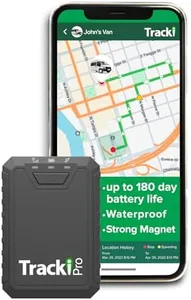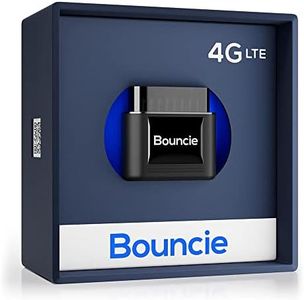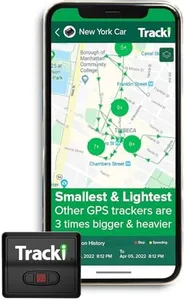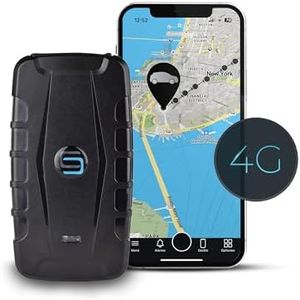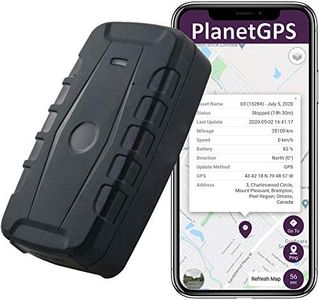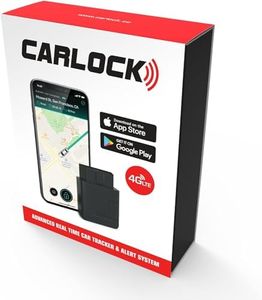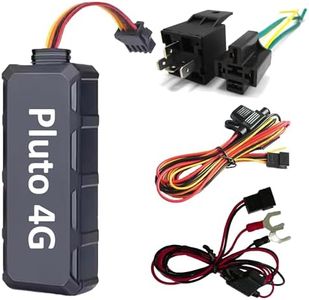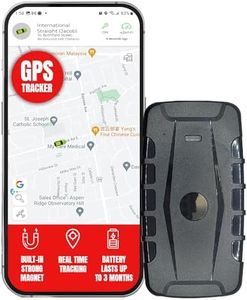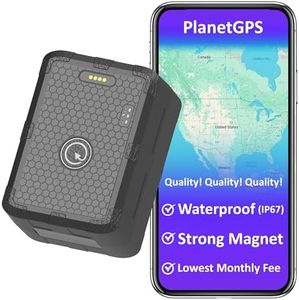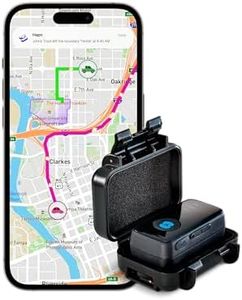10 Best Car Tracking Devices 2025 in Canada
Our technology thoroughly searches through the online shopping world, reviewing hundreds of sites. We then process and analyze this information, updating in real-time to bring you the latest top-rated products. This way, you always get the best and most current options available.

Our Top Picks
Winner
Tracki Pro GPS Tracker for Vehicles up to 12 Months Waterproof Magnetic Asset Real time Tracker 4G LTE Long Battery Life 2-12 Month, Unlimited Distance, Subscription Required, Speed Monitor, Geofence
The Tracki Pro GPS Tracker is a solid choice for anyone needing reliable vehicle tracking across a wide area, supporting over 180 countries with 4G LTE cellular coverage and fallback to older networks. It combines GPS with multiple satellite systems and even Wi-Fi positioning, which helps keep track of your vehicle indoors or in tricky places where GPS alone struggles. This means you get accurate, real-time location updates, which is great if you want to monitor your car's movement closely. It offers useful alerts for speeding, movement, low battery, and geofence breaches, which you receive via app notifications, emails, or optional SMS messages.
One of Tracki Pro’s standout features is its impressive battery life, lasting from 2 up to 12 months depending on usage and network conditions. This rechargeable battery and waterproof design make it durable and convenient for long-term use without constant maintenance. The device is also fairly compact and lightweight, and it comes with strong magnets and mounting options, allowing easy and secure installation on your vehicle without professional help.
Keep in mind that using the device requires a monthly subscription starting from about $9.95, which is an ongoing cost to consider. While the device supports real-time tracking, the update frequency depends on your chosen mode and network strength, so it may not be instant in all conditions. Also, the device uses cellular connectivity, so it requires good network coverage to function optimally. For users in very remote areas without coverage, this could be a limitation. Tracki Pro suits personal vehicles, fleets, or asset tracking needs when you want detailed location info with reliable battery life and easy installation. It is ideal for users seeking a robust tracking solution with global coverage and who are comfortable with a subscription model.
Bouncie GPS Tracker for Vehicles with Real-Time Location, Route History, Speed Monitoring, Geo-Fence & Accident Notifications - for Fleets & Family - Cancel Anytime
The Bouncie GPS Tracker is a solid choice for anyone looking to monitor vehicles in real time, whether for family safety or managing a fleet. It uses 4G LTE cellular technology, so you get live location updates and unlimited trip history without worrying about battery life since it plugs directly into your car’s OBD2 port. This makes installation simple and avoids the hassle of charging or replacing batteries. You can also set up geo-fences to get alerts when a vehicle enters or leaves certain areas, which is great for keeping track of kids or company cars. The tracker goes beyond just location by monitoring speed, harsh braking, acceleration, and even vehicle health through engine diagnostics, helping prevent unexpected breakdowns. Accident detection with instant notifications adds an extra layer of safety. Data is stored without limits and accessible via apps on iOS, Android, or desktop, making it easy to check vehicle activity anytime.
One drawback is the required monthly subscription fee of about $13.20, which might be a turnoff for some, especially if you want a device without recurring costs. Also, it works with vehicles from 1996 onward that have an OBD2 port, so very old cars are not compatible. The device’s compact size means it stays hidden and won’t interfere with driving. Bouncie provides a user-friendly, feature-rich car tracker well suited for people who want detailed insights and reliable alerts to improve safety and vehicle care, as long as they are comfortable with a monthly subscription.
Buying Guide for the Best Car Tracking Devices
Choosing the right car tracking device can make a big difference in how you monitor and protect your vehicle. These devices use technology to help you know where your car is at all times, which can be useful for security, fleet management, or keeping an eye on young drivers. To find the best fit, it's important to understand the main features and how they relate to your needs. Think about what you want to achieve with the device—whether it's real-time tracking, theft recovery, or monitoring driving habits—and let that guide your decision.Most Popular Categories Right Now
